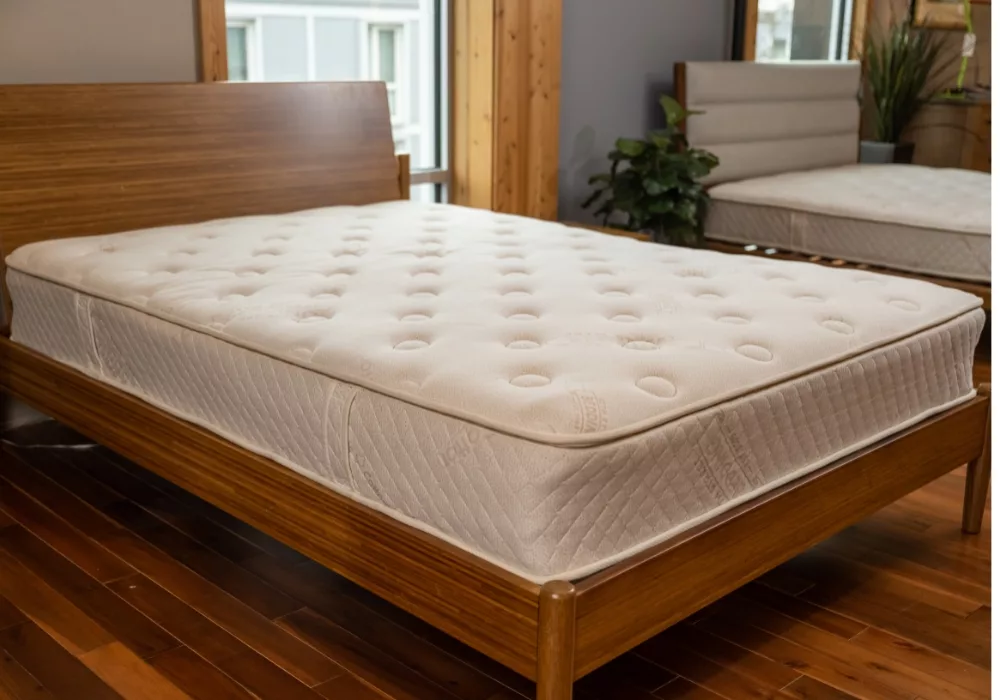Expert Tips: Selecting the Best Mattress for Spinal Stenosis in 2024
Living with spinal stenosis can be challenging, especially when it comes to getting a good night’s sleep. The right mattress can make a significant difference in managing pain and improving sleep quality. In this article, we’ll share expert tips on selecting the best mattress for spinal stenosis to help you wake up refreshed and pain-free. […]

fremont innerspring
Living with spinal stenosis can be challenging, especially when it comes to getting a good night’s sleep. The right mattress can make a significant difference in managing pain and improving sleep quality. In this article, we’ll share expert tips on selecting the best mattress for spinal stenosis to help you wake up refreshed and pain-free.
Understanding Spinal Stenosis and Sleep
Spinal stenosis is a condition characterized by the narrowing of spaces within the spine, which can put pressure on the nerves. This can lead to pain, numbness, and weakness, particularly in the lower back and legs. Sleep plays a crucial role in managing these symptoms, as poor sleep can exacerbate pain and reduce overall well-being.
Choosing the right mattress is essential for those with spinal stenosis, as it can provide the necessary support and alignment to alleviate pressure on the spine.
Key Features to Look for in a Mattress
- Firmness Level
- Medium-Firm Support: For most people with spinal stenosis, a medium-firm mattress offers the ideal balance of support and comfort. This firmness level helps maintain proper spinal alignment while relieving pressure points.
- Personal Preference: It’s important to consider your own comfort preferences. Some individuals might find a slightly softer or firmer mattress more comfortable.
- Pressure Relief
- Memory Foam: Memory foam mattresses are known for their excellent pressure-relieving properties. They contour to the body’s shape, providing targeted support and reducing pressure on the spine.
- Latex: Latex mattresses offer a combination of support and comfort, with a slightly bouncier feel than memory foam. They are also durable and hypoallergenic.
- Spinal Alignment
- Zoned Support: Look for mattresses with zoned support systems, which provide different levels of support to different areas of the body. This helps maintain proper spinal alignment and reduces the risk of exacerbating spinal stenosis symptoms.
- Motion Isolation
- Minimizing Disruptions: If you share your bed with a partner, motion isolation becomes important. Memory foam and hybrid mattresses tend to excel in this area, ensuring that movement on one side of the bed doesn’t disturb the other side.
- Cooling Features
- Temperature Regulation: Some mattresses come with cooling technologies, such as gel-infused foam or breathable covers, to help regulate temperature. This can be particularly beneficial if you tend to sleep hot.
Recommended Mattress Types
- Memory Foam Mattresses
- Benefits: Memory foam provides excellent pressure relief and contouring support, making it a popular choice for individuals with spinal stenosis. It adapts to your body shape, reducing stress on the spine and enhancing comfort.
- Considerations: Look for high-density memory foam for better durability and support.
- Hybrid Mattresses
- Benefits: Hybrid mattresses combine the support of innerspring coils with the comfort of foam or latex layers. This combination offers good support, pressure relief, and motion isolation, making it suitable for people with spinal stenosis.
- Considerations: Ensure the hybrid mattress has a high-quality coil system and sufficient foam layers for optimal comfort.
- Latex Mattresses
- Benefits: Latex mattresses are known for their durability, support, and natural cooling properties. They provide a slightly firmer feel than memory foam and are ideal for those who prefer a more responsive mattress.
- Considerations: Natural latex is hypoallergenic and eco-friendly, making it a good choice for those with allergies.
Additional Tips for Better Sleep with Spinal Stenosis
- Sleep Position
- Back Sleepers: Sleeping on your back with a pillow under your knees can help maintain the natural curve of your spine and reduce pressure on the lower back.
- Side Sleepers: Placing a pillow between your knees can keep your spine aligned and reduce discomfort.
- Mattress Topper
- Enhancing Comfort: If your mattress is too firm or not providing adequate support, consider adding a mattress topper. Memory foam or latex toppers can add an extra layer of comfort and pressure relief.
- Regular Replacement
- Longevity: Mattresses have a lifespan of around 7-10 years. Regularly replacing your mattress ensures you maintain optimal support and comfort, which is crucial for managing spinal stenosis.
- Consult a Professional
- Medical Advice: Always consult with a healthcare professional or a spine specialist when selecting a mattress. They can provide personalized recommendations based on your specific condition and needs.
Conclusion
Choosing the best mattress for spinal stenosis involves considering factors like firmness, pressure relief, spinal alignment, and motion isolation. Memory foam, hybrid, and latex mattresses are excellent options, each offering unique benefits. By selecting the right mattress, you can significantly improve your sleep quality and manage the symptoms of spinal stenosis more effectively. Remember to consider your personal preferences and consult with a healthcare professional to find the perfect mattress for your needs.
